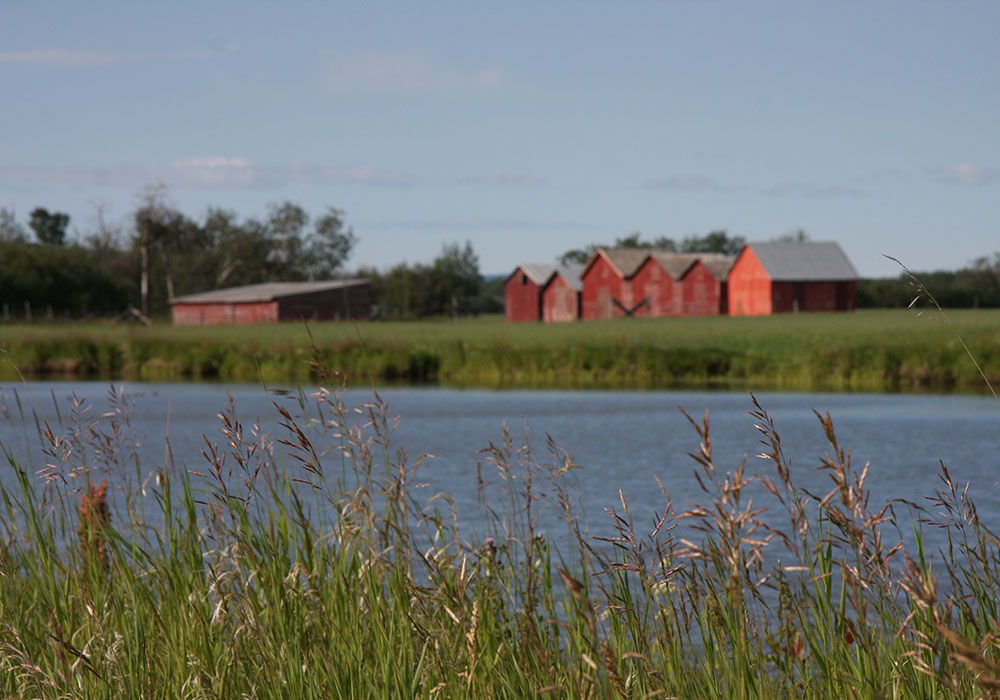Late seeding likely | Plans to floodproof home underway
JASMIN, Sask. — Like many farmers in east-central Saskatchewan, grain producer Jack Shymko will be entering this year’s growing season with some trepidation.
The snow in his farmyard near Jasmin, Sask., is piling up and the spring melt is shaping up to be a big one.
Moisture has been plentiful and drainage is poor in this area west of Yorkton.
For the past few years, Jack and his neighbours have been dodging sloughs and potholes and keeping a close eye on the water table.
Read Also

Farm auctions evolve with the times
Times have changed. The number of live, on-farm auctions is seeing a drastic decline in recent years. Today’s younger farmers may actually never experience going to one.
And judging by the height of the snowbanks in the area, it will be more of the same this spring.
“We’ve got it as bad as anyone has right in this area,” said Jack.
“This year is not looking good in my mind because of all the snow that we’ve got,” he said.
“If we get a couple of wet snows in April and a couple of inches of rain in May, it’s going to be very wet.”
Jack is not sounding the alarm just yet, but after planting 38 consecutive crops in the area, all signs are pointing toward a late, wet spring.
Plans are in place to floodproof the family home, where he and his wife, MaryAnne, raised four children.
MaryAnne said the big slough near the farmyard was pumped down last fall to protect the house and driveway.
“We pumped and pumped,” she said. “There’s lots of water and with the snow, there’s going to be lots.”
If spring seeding is delayed, as Jack suspects, he wants to have everything is in order at home before the field work begins.
Recent years have been some of the wettest ever seen .
“Last year, we did not seed all of our land. What we did seed, we lost a lot of acres to water,” MaryAnne said.
In 2010, farmers in the area seeded about one-third of their normal acreage. In 2012, conditions were even worse.
“Right now, we’ve only got two or three inches of dry topsoil and after that, our sloughs are filled right up,” Jack said. “The water can’t go down, so it’s got to go up.”
With any luck, Jack will plant 1,300 acres this year, comprising mainly oats, barley, wheat and canola. His annual seeded acreage was closer to 1,700 a few years ago, but the rising water table is slowly forcing him to take more land out of grain production.
Jack and MaryAnne also keep a commercial herd of 45 cows.
At 62, the Shymkos are content to keep farming. Their children help when needed, but are pursuing busy family lives elsewhere.
Jack has always enjoyed the challenges involved in agriculture.
Unlike many producers, who come from a farming background, Jack entered the industry with no farming experience and no land base.
He was a town kid who grew up in nearby Ituna, but he was always drawn to the rural lifestyle.
His first experience in farming was as a hired hand: picking rocks, throwing square bales and shovelling manure.
“I thought to myself, ‘if I can do those jobs, then managing a farm shouldn’t be an issue.’ ”
He relocated to Regina in the mid-1960s, married, started a family and took out a mortgage on three quarter sections of land near Jasmin, Sask.
The Shymkos’ first crop, planted in the spring of 1975, covered 175 acres.
In subsequent years, more acres were cleared, additional land was bought and production expanded.
“I’m a first generation farmer,” he said.
“I’m a guy who started out with nothing … except a lot of debt. And how we ever made it through the ’80s, when those interest rates were up to 18 and 20 percent, I’ll never know.”
Jack is also a founding member of what is today known as the Prairie Oat Growers Association (POGA).
The organization, which now comprises provincial oat growing organizations in Manitoba, Saskatchewan and Alberta, emerged from a series of meetings held at the Shymko dining room table in the late 1990s.
“We had at the time two active marketing clubs in the area — one at Kelliher and one at Foam Lake — and we always said there was no voice representing oat growers,” said Jack, who serves as a director with POGA and the Saskatchewan Oat Development Commission.
Marketing club members organized a prairie-wide growers meeting in Ituna that was attended by more than 250 farmers from Manitoba, Saskatchewan and Alberta. An organization was established at that event.
Jack has been involved with the organization since its inauguration, but will step down as a POGA director this fall.
“For one thing, I’ve been there for a long time … and also, we have to get young blood and new ideas,” he said.
“Just because I think I’m right all the time doesn’t mean that I am.”
Despite declining global acreage, oat production continues to occupy a significant number of acres each year around Jasmin, partly because of soil and moisture conditions in the area.
“Oat production is decreasing and that’s a worldwide phenomenon … and really the main reason for that is … that there’s not enough demand for the product,” Jack said.
“If you pay for the product, you will get the product … but it’s all relative. It’s relative to canola and it’s relative to wheat. If farmers are making a dollar growing oats, they will grow it.”















